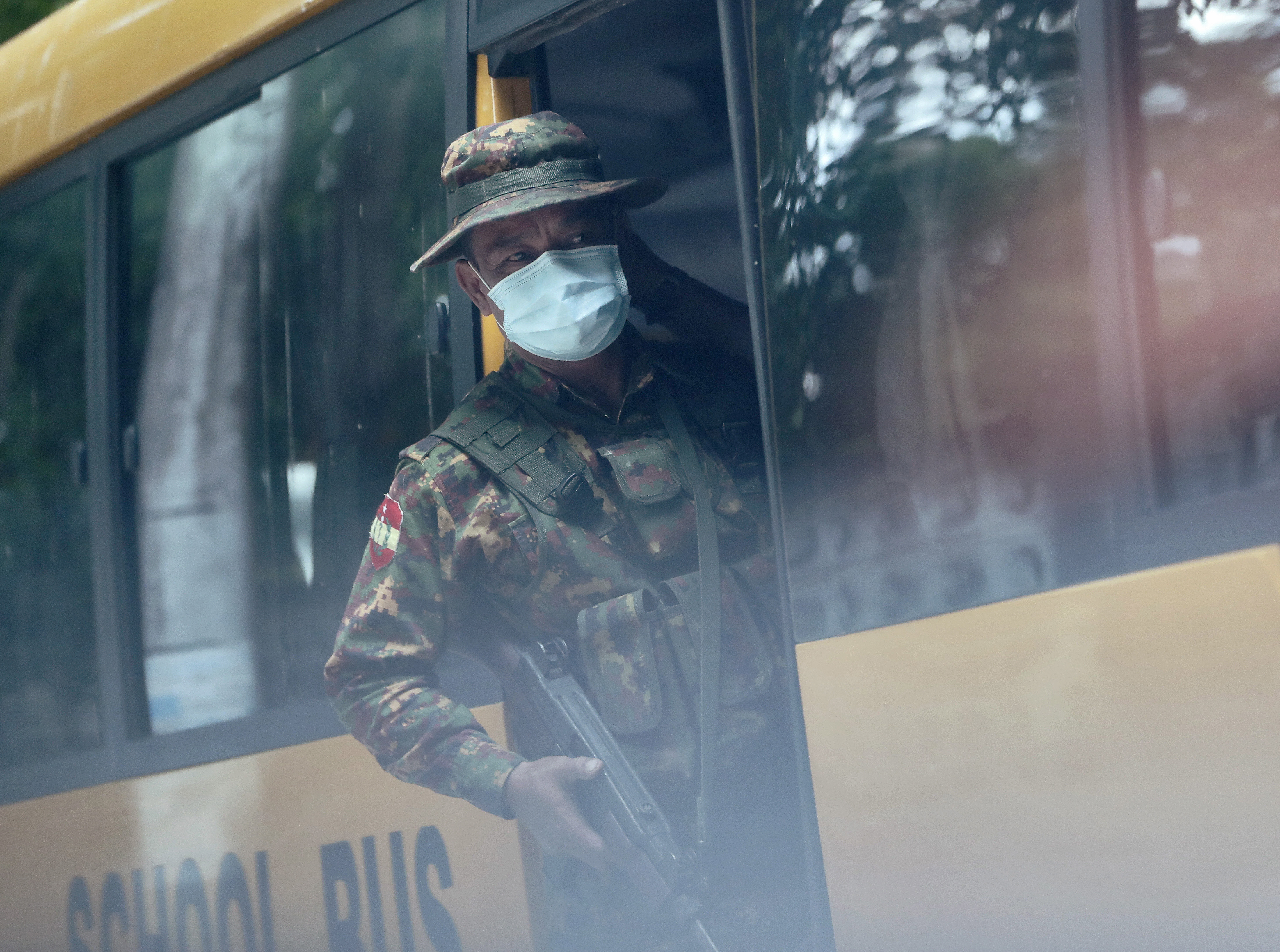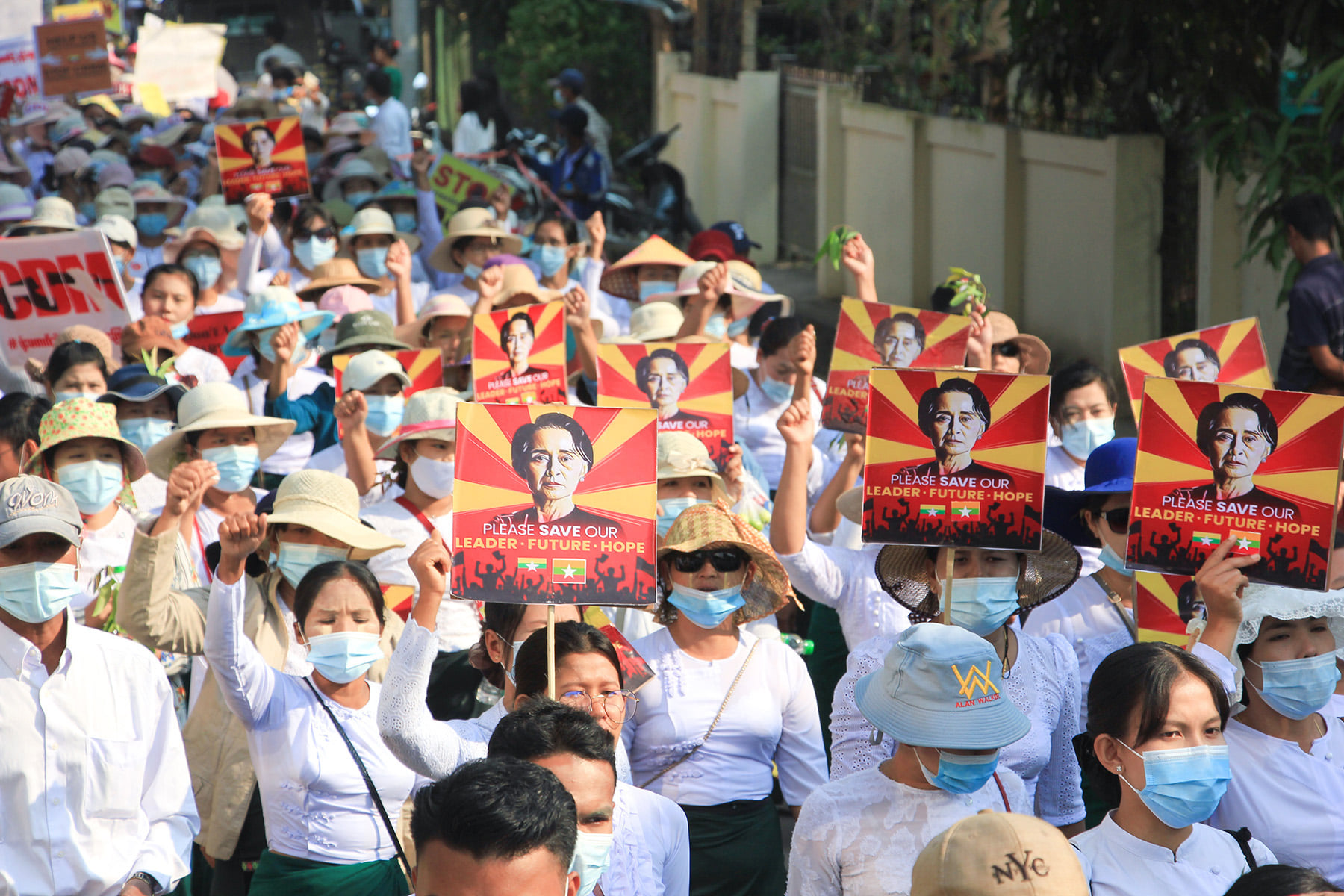
Despite ongoing assaults by the junta’s armed forces, frequent bomb blasts, and the continued risk of Covid-19, Myanmar’s military council reopened government schools on Tuesday in a power play to show that the country’s administrative mechanisms were still functioning.
Many schools opened to empty classrooms on the first day of the academic year, a teacher from Myanmar’s Teachers’ Federation said. The federation estimated that only 10 percent of the country’s estimated 900,000 students opted to enrol this year, after registration opened on May 24 due to pressure from the military council.
The teacher noted that even among those who did enrol, some parents did not send their children to school on June 1 due to the ongoing instability and violence throughout the country.
In Yangon, Mandalay and Sagaing regions and in Chin and Kayah (Karenni) states, where there have been intense clashes between the Myanmar military and local resistance forces, many schools are without students, the teacher said.
“Especially in Sagaing, there are schools without any enrolment or students, even in villages,” he told Myanmar Now.
Many teachers at these schools left early on Tuesday when they realised they had no one to teach, he added.
A campaign against school enrolment has unfolded as a major feature of the anti-dictatorship movement in defiance of the junta and its attempted February 1 coup. There have been nationwide demonstrations encouraging people to boycott the education system under the coup council, with protesters declaring their rejection of what they call the “military slave education” in red paint on school walls across the country.
More than half of Myanmar’s 400,000 teachers are also on strike, in accordance with the Civil Disobedience Movement (CDM) aimed at toppling the regime, according to the teachers’ federation. They have been suspended—either temporarily or permanently—by the military council.
More than 100 striking teachers have also been charged under the Penal Code’s Section 505a for incitement, according to the teachers’ federation.

Explosions and militarisation
There were simultaneous explosions reported in schools across nine villages in Sagaing Region’s Kanbalu Township on Monday night—the day before schools reopened in a region where few children have registered to start the year. Myanmar Now was able to verify two of the blasts at the time of reporting.
On the same night, there was another explosion at a school in Kyun Hla, a town located nine miles from Kanbalu, a local said.
Kanbalu headquarters the military’s 6006th Tank Battalion and the No. 2 Supply and Transport Battalion 2.
Of the 10 percent of students that have registered for school this year, many are in military-dominated townships across the country, according to the Myanmar Teachers’ Federation.
In Kanbalu Township’s Paygyi village, there were also explosions on Monday night at a home where two soldiers were staying, and at an agricultural office under the coup council.

A high school in Paygyi—where almost half of the 300 students are the children of military personnel and employees—still reopened the next day, but with increased security precautions, according to a village resident.
“The school is barely open or functioning. All the entrances are locked. The students and teachers use the back door to enter. With all the doors locked, it must be pretty claustrophobic for the kids,” he added.
At the four high schools throughout Mandalay Region’s Myingyan Township there were only 47 students present on the first day of school, according to the Myingan Public Movement Committee. Most of the students—32— were at the No. 3 Basic Education High School, and 28 of them had military ties, the committee said.
Only two students reportedly showed up at the township’s 12 primary schools.
In Mandalay city, the regime’s armed forces opened fire and launched stun grenades on Monday night in an effort to crush public resistance to the coup council’s opening of schools. Students held flash protests on Tuesday, even as military trucks and tanks were spotted around the city.
Soldiers were also seen in Yangon in full army gear in front of schools and around school buses on Tuesday.

The southern township of Paletwa in Chin State reportedly had the state’s highest rate of enrolment, with just over 9,500 students out of 30,000 registering for school. Some, but not all, went to class on Tuesday, local news outlet Chin World reported. Next highest in the state were Tedim and Falam townships, but there was reportedly no student enrollment in Mindat, where martial law has been imposed since mid-May.
Paletwa saw intensified clashes between the Arakan Army and the Myanmar military in recent years, with nearly half of the township’s population of 110,000 affected by armed conflict, and thousands of people displaced to makeshift camps.
Fighting also took place during this period throughout Rakhine State to the south, where tens of thousands of people were displaced. The state reportedly had higher rates of student registration for the 2021 school year, although exact figures were not known at the time of reporting.
The teacher from the Myanmar Teachers’ Federation who spoke to Myanmar Now said he did not blame students or teachers in Rakhine State for starting the year, given the challenges faced by locals prior to the coup.
“Rakhine thinks separately. There might be more students [enrolled] than other regions. There might be fewer CDM workers than others. And I think that’s completely acceptable—they have faced oppression before,” the teacher said.
In its propaganda newspaper The Mirror, the military council announced a one-month ceasefire with ethnic armed organisations from June 1-30 so that students could return to school.
The report stated that military operations would halt “except in places where the country’s safety and the administration mechanism were being harmed.”
The military’s past unilateral ceasefire declarations have not halted fighting or offensives throughout Myanmar.
